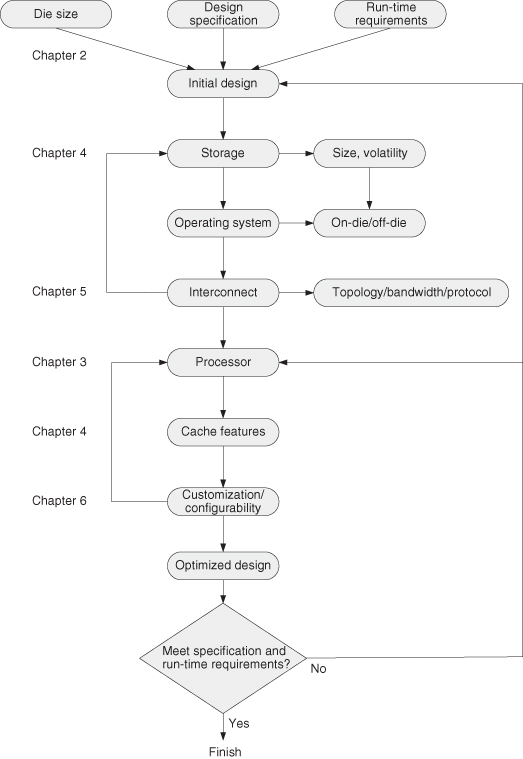PREFACE
The next generation of computer system designers will be concerned more about the elements of a system tailored to particular applications than with the details of processors and memories.
Such designers would have rudimentary knowledge of processors and other elements in the system, but the success of their design would depend on their skills in making system-level trade-offs that optimize the cost, performance, and other attributes to meet application requirements.
This text is organized to introduce issues in computer system design, particularly for system-on-chip (SOC). Managing such design requires knowledge of a number of issues, as shown in Figure 1.
Figure 1 An approach to SOC system design described in this book.

After Chapter 1, the introduction chapter, Chapter 2 looks at issues that define the design space: area, speed, power consumption, and configurability. Chapters 3–5 provide background knowledge of the basic elements in a system: processor, memory, and interconnect.
The succeeding chapters focus on computer systems tailored to specific applications and technologies. Chapter 6 covers issues in customizing and configuring designs. Chapter 7 addresses system-level trade-offs for various applications, bringing together earlier material in this study. Finally, Chapter 8 presents future challenges for system design and SOC possibilities.
The tools that illustrate ...

